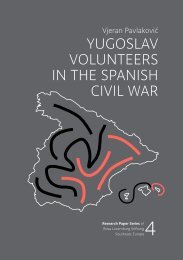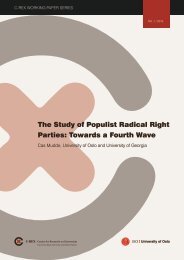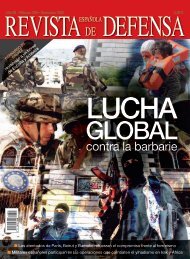SUMMARY
2016_classification_of_programmes_against_violent_islamist_extremism.pdf?utm_content=buffer41973&utm_medium=social&utm_source=twitter
2016_classification_of_programmes_against_violent_islamist_extremism.pdf?utm_content=buffer41973&utm_medium=social&utm_source=twitter
Create successful ePaper yourself
Turn your PDF publications into a flip-book with our unique Google optimized e-Paper software.
fees or donations. The funds received are tax-deductible and must<br />
be used promptly for the purposes set out in the articles of association.<br />
2.3. ENVIRONMENT AND INTERRELATIONSHIP BETWEEN<br />
INITIATIVES<br />
A key aspect is the interrelationship between initiatives and other<br />
actors in the prevention work. In addition to financing, interlinking<br />
with other initiatives in various ways seems to be necessary.<br />
The need to form network structures is already evident from the<br />
existence of initiatives that want to establish a link between different<br />
actors in the field (institutional networks).<br />
The combination of religious, state and civil society actors shows<br />
that the phenomenon is a task for society as a whole. The connection<br />
between security policy and religious and social aspects is important,<br />
since significant risk and protection factors for radicalisation<br />
can also be found in these areas.<br />
When looking closely at the interdependencies of the identified<br />
formats, the formation of network structures generally has several<br />
functions:<br />
a) Generation of knowledge about the phenomenon / Exchange<br />
on specific issues or competences<br />
b) Development of possible ideas for action in order to<br />
help/support those affected or to ensure further care and assistance<br />
c) Evaluation / Further development of one’s own work<br />
The functions of generating and exchanging knowledge are still<br />
poorly developed for the phenomenon of Islamic radicalisation<br />
and this is reflected in the objectives of the initiatives with regards<br />
to the development of concepts and the available format of institutional<br />
networking. 19<br />
A further advantage of interlinking initiatives is the accumulation<br />
of skills. For example, “HAYAT” (2015) shows that the involvement<br />
of actors from social work or the family help facilitate the approach<br />
to the individuals in question. For example, targeted answering<br />
of religious questions by other Muslims (see Dantschke<br />
19 See chapter 3.1.3.1.<br />
17








